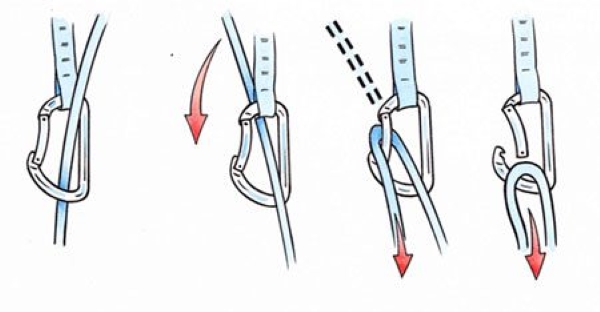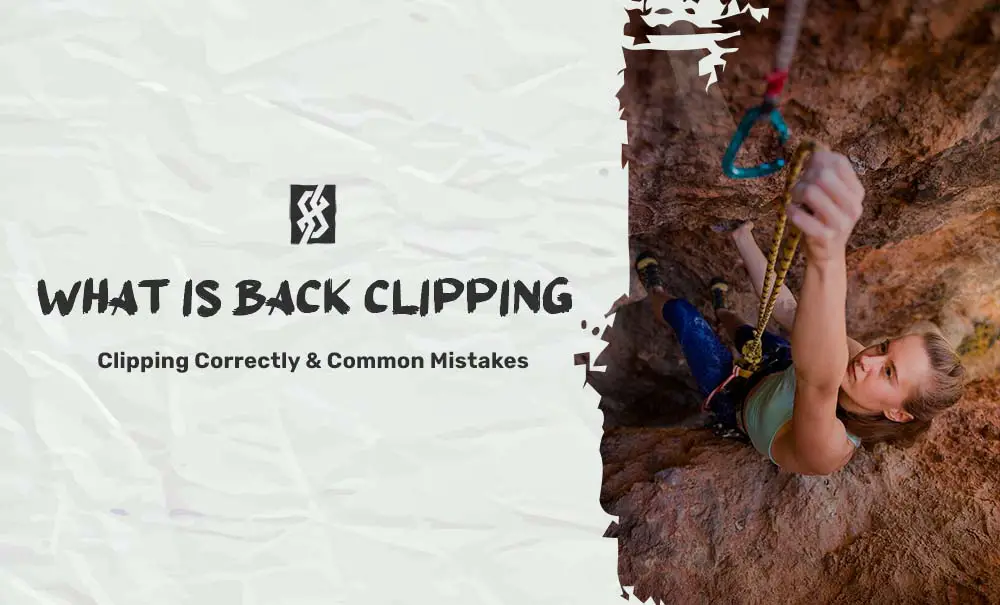When learning to lead climb, developing muscle memory and a thorough knowledge of clipping is critical. Lead climbing clipping correctly is not too complicated, however, there are a couple of innocent mistakes that can lead to some nasty whippers when ignored.
Being new to lead climbing can be a bit daunting, and with safety being at the top of the priority list, it’s important to learn how to clip correctly. The more you lead climb, the more confident you’ll get and clipping will become second nature.
There are a few mistakes you can make when lead climbing clipping, mainly back clipping or z clipping. Learn how to avoid these in the beginning and you will set yourself up for success and safety. In this article, you will learn about these common clipping mistakes, the risks they pose, and how to avoid them.
Proper Clipping In Lead Climbing
Before we go into specific clipping mistakes, let’s touch on what a proper clip should look like. To put this in perspective, imagine you are on a sport climb next to an empty bolt hanger. First, take a quickdraw off of your harness. There will be one carabiner that is loosely attached to the dogbone and one that is rigid. Place the loose carabiner on the bolt, with the rigid carabiner hanging below. This orientation prevents the clipping carabiner from becoming flipped upside down and thus harder to clip.

Pull up slack from below your harness, but not below the previous draw, and clip it into the carabiner with the side that leads to your tie-in knot on the outside of the quickdraw. Sounds simple enough right? Now let’s go over where things can go wrong.
Lead Climbing Clipping Mistakes
Back Clipping
The most common clipping mistake when lead climbing is back clipping. A back clip occurs when the rope is placed through the quickdraw in the wrong orientation. Going back to the correct clipping section, you will remember that the climber side of the rope (the side that leads to your knot) should be on the outside of the draw (further away from the rock). A backclip is the opposite of this – the climber side of the rope clipped to the inside of the draw.

The danger of a back clip is that the rope can now unclip itself in a fall. This situation becomes more likely in vertical and less than vertical terrain but is always important to avoid. To make sure the rope isn’t back clipped, simply give it a visual inspection to ensure your knot is on the outside of the quickdraw before you continue up the wall.
Here are some back clipping examples and what would happen if you did back clip.
What Is Z Clipping?
Another common clipping mistake is the z-clip. Z clipping in climbing is only possible when two clips are within arm’s reach of each other. Think of closely bolted routes or inside the climbing gym. Needless to say, it is not something you will have to worry about in Smith Rock, Joshua Tree, or other notoriously runout areas with the exception of clipping multiple trad pieces placed close together.
Z clipping happens when the climber pulls up the slack from below the previous clip to make a clip on the following bolt. This usually happens when the climber isn’t looking closely or paying attention while pulling the rope up.
If a climber falls after making a z-clip they will be caught by the second draw down rather than the highest clipped bolt. This can result in a potentially dangerous and certainly bigger-than-expected whipper. Luckily, z-clips are easy to avoid. Just pay attention to where you are pulling the rope from when the route is closely bolted.
Falling While Clipping
More so than back clipping and z-clipping, the title is pretty self-explanatory on this one. Falling while clipping poses the risk of potentially taking a dangerously large fall. This is because several feet of slack are introduced to the system when the climber pulls up the rope to clip (depending on how close they are to the bolt). In the worst-case scenario of this, the climber could hit the ground (decking) or ledgey terrain below.

To avoid falling while clipping, always find a secure clipping position before pulling rope up. It is also important to humble the ego here – it is safer to let go and take the fall than it is to pull slack up and then fall. If you need to, you can grab the draw in order to make the clip. However, when doing this make sure to grab the dogbone rather than the carabiner; this poses its own set of risks. If you are too pumped or don’t have the strength to support yourself in this way, just give your belayer a heads-up and take the fall.
Clip Correctly & Climb On!
If you are new to lead climbing, always learn with a guide, instructor, or experienced climber. Articles like this are great for further learning but do not replace in-person instruction. There are lots of nuances to lead climbing safely, some of which will only be realized with experience.
Start by practicing clipping on the ground with a quickdraw, then move into mock leading on top rope to prepare yourself for the sharp end. Commit these common clipping mistakes to memory and develop correct clipping habits and you will enjoy years of safe lead climbing to come.



